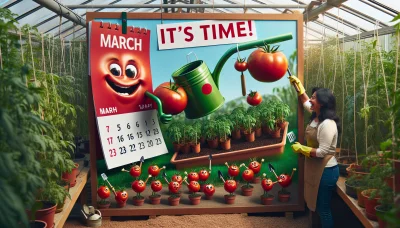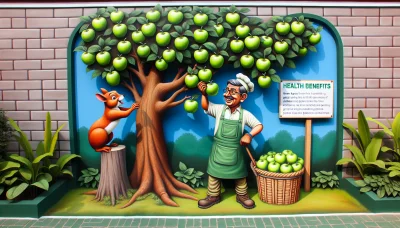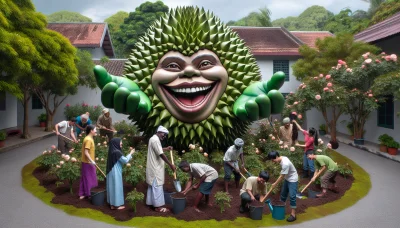Do strawberries come back every year Quiz
Test Your Knowledge
Question of
Do Strawberries Come Back Every Year?
Strawberry plants are perennials, meaning they are capable of surviving and producing fruit for several years. Under the right conditions, including proper sunlight, soil, and water, strawberries can indeed come back year after year and bear fruit. While the individual plants may not last indefinitely, with proper care, a strawberry patch can remain productive for about three to five years, sometimes even longer. This longevity allows gardeners to enjoy the fruits of their labor across multiple growing seasons.
Understanding Strawberry Plant Types
Strawberry plants come in three primary types: June-bearing, everbearing, and day-neutral. Each variety has a unique bearing pattern that affects both the timing and the nature of their fruit production. June-bearing strawberries produce a single, large crop per year, typically in June, hence their name. They are known for their abundance of fruit during this period but will not produce again until the following year, making them an annual producer in terms of harvest, though the plants themselves are perennial. Everbearing strawberries, on the other hand, produce two to three harvests throughout the growing season, usually in spring, summer, and fall. This allows for a more extended harvesting period compared to June-bearing varieties. Lastly, day-neutral strawberries are capable of producing fruit throughout the entire growing season as long as the temperatures are favorable, typically between 35 and 85 degrees Fahrenheit. This type can yield a continuous harvest of strawberries from early summer into fall, offering a perennial approach to strawberry production in terms of consistent yield.
Optimal Conditions for Strawberry Growth
To ensure strawberries thrive and return year after year, it's crucial to provide them with their ideal growing conditions. Firstly, the soil type plays a significant role; strawberries prefer well-drained, loamy soil rich in organic matter. A slightly acidic pH between 5.5 and 6.8 is optimal. Regarding sunlight, these plants need full sun, meaning at least six to eight hours of direct sunlight daily. Adequate sunlight is essential for the plants to produce the maximum amount of fruit. Water requirements are also critical; strawberries need consistent moisture, especially during the fruiting period. However, it's important to avoid waterlogging the soil as this can lead to root diseases. A balanced approach to watering, ensuring the soil is moist but not saturated, will support healthy growth and fruit production.
Yearly Care for Strawberry Plants
- Early Spring: Remove old mulch to allow new growth.
- After Frost: Apply a new layer of mulch to conserve moisture and control weeds.
- Spring through Fall: Fertilize plants to encourage strong development and fruit production.
- After Harvest: Prune or mow old leaves to rejuvenate plants and remove any diseased or dead foliage.
- Summer: Regularly water the plants, especially during dry periods, to ensure they receive enough moisture.
- Early Fall: Thin out crowded beds to improve air circulation and reduce disease risk.
- Winter Preparation: Apply a thick layer of straw mulch to protect plants from freezing temperatures.
Common Challenges in Growing Strawberries
Growing strawberries can be a rewarding experience, but it comes with its own set of challenges that can affect the perennial growth of these beloved plants. One of the primary issues gardeners face is the threat of pests, such as slugs, snails, and birds, which are attracted to the sweet fruits. Diseases also pose a significant risk, with fungal infections like powdery mildew and verticillium wilt being common culprits that can devastate strawberry plants. Moreover, climate challenges can impact strawberry growth, as these plants require specific conditions to thrive. Too much heat can scorch the plants, while excessive rainfall can lead to root rot and other moisture-related diseases. Understanding and addressing these challenges is crucial for gardeners looking to enjoy a bountiful strawberry harvest.
Renewing Your Strawberry Patch
Strawberry plants, while perennial, tend to decrease in productivity after their third year. To ensure a continuous and bountiful yield, it's crucial to rejuvenate your strawberry patch periodically. The ideal time to replace old strawberry plants is in the late summer or early fall. This timing allows new plants to establish themselves before the onset of winter, ready to burst into growth come spring.
Begin by removing any plants that are over three years old, keeping the newer, more vigorous ones. It’s also a perfect opportunity to reorganize your patch, spacing the plants about 18 inches apart to give them ample room to grow. Incorporate a generous amount of compost into the soil to replenish nutrients. If you're starting with new plants, select disease-resistant varieties to ensure the health and longevity of your patch.
Water the new or remaining plants thoroughly after planting and continue to provide regular waterings, especially during dry spells. Mulching around the plants with straw or wood chips can help retain soil moisture, suppress weeds, and protect the roots over winter. By following these steps, you can enjoy a vibrant strawberry patch that produces delicious fruits year after year.
FAQs on Growing Strawberries
-
Are strawberries perennials or annuals?
Strawberries are perennials, meaning they can produce fruit for several years. However, their productivity typically declines after the first few years, so many gardeners replant them every 2-3 years.
-
How much sunlight do strawberries need?
Strawberries require full sunlight for optimal growth, which means at least 6-8 hours of direct sunlight per day.
-
What type of soil is best for growing strawberries?
They thrive in well-drained, loamy soil with a pH between 5.5 and 6.8. Amending soil with compost or manure can improve soil quality and strawberry yields.
-
How often should I water my strawberry plants?
Strawberries need regular watering, especially during the fruiting season. Aim for about 1 inch of water per week, but adjust based on rainfall and temperature conditions.
-
Do strawberries need fertilization?
Yes, feeding strawberries with a balanced fertilizer in early spring and again in late summer can help promote healthy growth and fruit production.
-
How do I protect strawberries from birds and pests?
Using netting can protect strawberries from birds. For pests like slugs and snails, diatomaceous earth or beer traps can be effective. Regularly inspecting plants and removing any pests by hand can also help.
-
Why are my strawberry plants not producing fruit?
Lack of fruit can be due to several factors including insufficient sunlight, over-fertilization (especially with nitrogen), incorrect watering, or the plants being too young or too old. Ensuring proper care according to their needs can help address this issue.
-
How do I prepare strawberry plants for winter?
In colder regions, mulching around the plants with straw or pine needles can help protect them from freeze-thaw cycles. Remove the mulch in early spring, after the last frost, to allow new growth.












